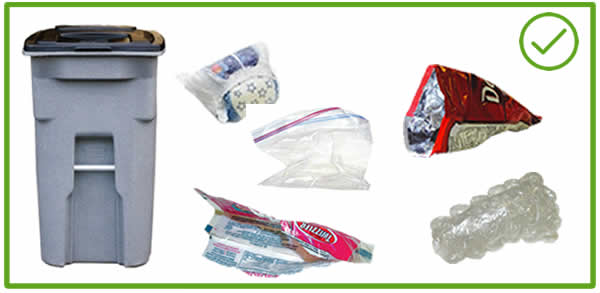
#7 plastics are used to manufacture DVDs, computer and iPod cases, sunglasses, nylon, certain food containers and three- and five-gallon water bottles. Traditionally, #7 plastics, also called polycarbonate plastics, haven’t been recycled. ♻️ Polystyrene plastics are picked up through some curbside recycling programs. Polystyrene is used to make disposable dishes, egg cartons, meat trays, CD cases and aspirin bottles. Styrofoam is not accepted through all curbside programs, because it is very difficult to recycle. PS (polystyrene) is also known as styrofoam. ♻️ PP plastics are picked up through most curbside recycling programs. PP (polypropylene) is mostly found in bottle caps, straws, medicine bottles, some yogurt containers, and syrup bottles. Please check with your county’s recycling program for more information. ♻️ LDPE is generally not picked up through curbside recycling programs, but some will. Plastic bags are not allowed in the curbside bin and should be recycled at your local grocery store. Some of these items can be recycled, like frozen food containers and squeezable bottles, but not all curbside recycling services will accept them. LDPE (low-density polyethylene) is found in frozen food containers, shopping bags, furniture, and squeezable bottles. However, it is accepted by some recycling facilities and plastic lumber manufacturers. ♻️ V or PVC is generally not picked up through curbside recycling programs. Since PVC contains chlorine, it’s toxic when burned, making it more expensive to recycle. V (vinyl) or PVC (polyvinyl chloride) is found in shampoo bottles, piping, windows, siding and cooking oil bottles. Some programs only allow bottles made of this plastic with necks, like milk jugs and detergent bottles. ♻️ HDPE plastics are picked up through most curbside recycling programs. It’s found in juice bottles, household cleaner bottles, some shopping and trash bags, yogurt and butter tubs, milk jugs and cereal box liners. HDPE (high-density polyethylene) is used mostly for packaging. ♻️ PET/PETE plastics are picked up through most curbside recycling programs. It’s cheap, lightweight and incredibly easy to recycle. #1 plastic is the most common plastic used to make single-use bottled water, soda, and other beverages. PET or PETE stands for polyethylene terephthalate…try to say that five times fast.

Plastics #1-7 are usually acceptable in the curbside bin, but there are a few exceptions. This is simply a general guide and may vary depending on your location and the services available in your area.

Some counties don’t accept basic items like glass bottles or paper, so it’s important to be sure to check with your recycling service.

Make sure that you check with your county or local recycling service for what they do and don’t accept as part of their recycling program. Our next section deals with recycling specific items in your curbside bin. ♻️ Did you know…? One out of four items put in a recycling bin can’t actually be recycled through a curbside program, which means resources are spent on disposal instead. Since this has been enstated so recently, it’s important to double-check with your recycling service before placing these items in your curbside bin on collection day. But recently, a lot of recycling programs have started accepting these previously “unrecyclable” items. recycling contamination)įor many years, things like plastic lids and pizza boxes weren’t able to be recycled.


 0 kommentar(er)
0 kommentar(er)
